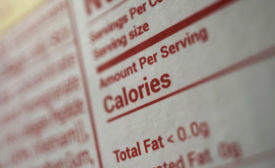Featured on Home Page
ARTICLES
Labeling: Rationalizing (negotiating) mix compositions, market positioning and more
Cheese surpasses milk as No. 1 private-label dairy category
Prairie Farms puts farm-to-table values at its forefront
How the dairy industry is overcoming supply chain disruption
IMAGE GALLERIES
Toft Dairy, Sandusky, OH
Large signs touting “Toft’s ‘One Quality’” and “Ohio’s Oldest Dairy” greet visitors to Toft Dairy’s 74,500-square-foot dairy plant/headquarters facility in Sandusky, Ohio. Those two messages amply describe the family-owned company’s heritage. After all, Toft Dairy, guided by five generations of the Toft and Meisler families, has been producing consistently high-quality dairy products for 119 years.
This photo gallery contains additional, unpublished photos of dairy processing facilities featured in Dairy Foods magazine. To view more Behind the Scenes galleries go to our archives page!
Borden Dairy, Dallas, TX
Under Borden Dairy’s new ‘people-first’ approach, employees at the company’s Dallas milk plant understand their value — and are motivated to work together to create the highest-quality product.
This photo gallery contains additional, unpublished photos of dairy processing facilities featured in Dairy Foods magazine. To view more Behind the Scenes galleries go to our archives page!
Lifeway Foods, Waukesha, Wis
In August of 2015 — more than a year after it started to make bottles and receive milk — Lifeway Foods celebrated the Waukesha plant’s official revival. The facility finally had begun the production of kefir. Today, the plant boasts more than 50 employees working days and shifts that vary by department. Kefir production — flavored and unflavored — runs five days a week. All kefir is packaged in the 32-ounce bottles the facility makes on-site.
This photo gallery contains additional, unpublished photos of dairy processing facilities featured in Dairy Foods magazine. To view more Behind the Scenes galleries go to our archives page!
Ingredients for dairy success
The future looks bright for probiotics, prebiotics and stevia, but a bit darker for sugar.
Strong growth ahead for global dairy products market
$546.8 billion
That’s the number the global market for dairy products is projected to reach by 2022. Growth will be driven by the rising importance of milk products in a balanced diet and nutrition, a growing body of scientific evidence validating the beneficial use of low-fat dairy products in controlling hypertension, and robust ingredient and flavor innovations for dairy products.
Source: Global Industry Analysts Inc., “Dairy Products — Global Strategic Business Report,” 2017.
A shift in dairy food preferences
What a difference a couple of decades can make. U.S. consumers have significantly increased their consumption of yogurt and cheese during the past 20 years while cutting back on milk and ice cream.
To appeal to consumers, be nimble and quick
Today’s shoppers have a long list of ‘wants’ from the foods they buy, according to a PMMI study. Dairy processors with the right products in the right retail channels should succeed.
Sprains and strains take a toll on dairy workers
Dairies are relatively safer than some other food manufacturing plants. Within the dairy industry, ice cream plants pose more dangers.
How processors reduce, reuse, recycle in their dairy plants
After surveying consumers about their attitudes toward living green, Unilever concluded that “sustainability presents a growth opportunity for business.” Here’s how some dairy processors have altered their practices.
The dairy Baedeker: a guide to global consumption
Who drinks the most milk? Who eats the most butter and cheese? These countries lead their regions in annual per-capita consumption (measured in kilograms) of dairy foods and beverages.
Get our new eMagazine delivered to your inbox every month.
Stay in the know on the latest dairy industry trends.
SUBSCRIBE TODAYCopyright ©2024. All Rights Reserved BNP Media.
Design, CMS, Hosting & Web Development :: ePublishing
























